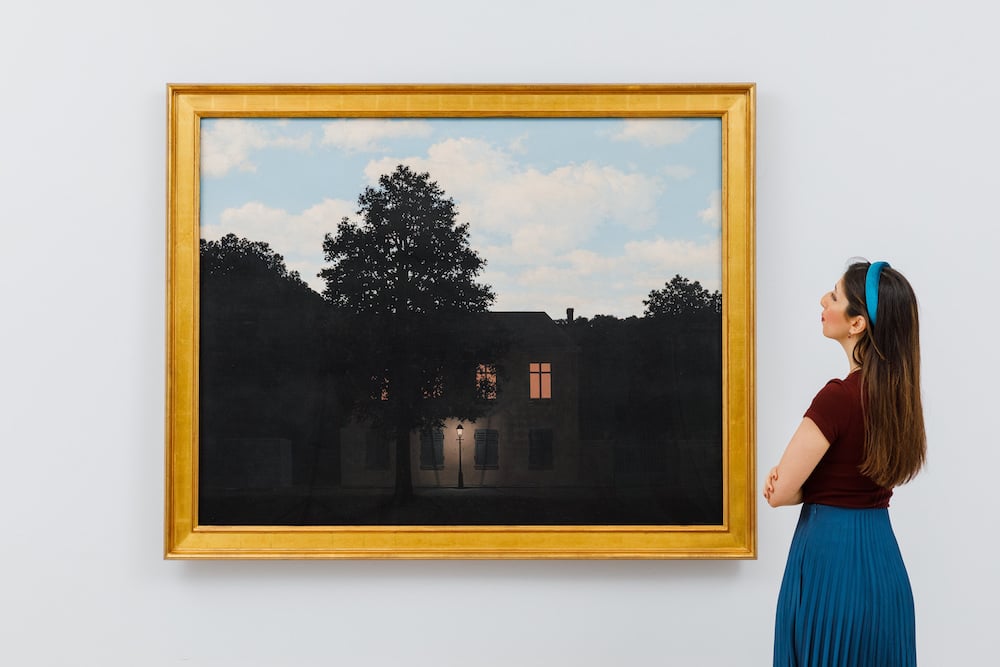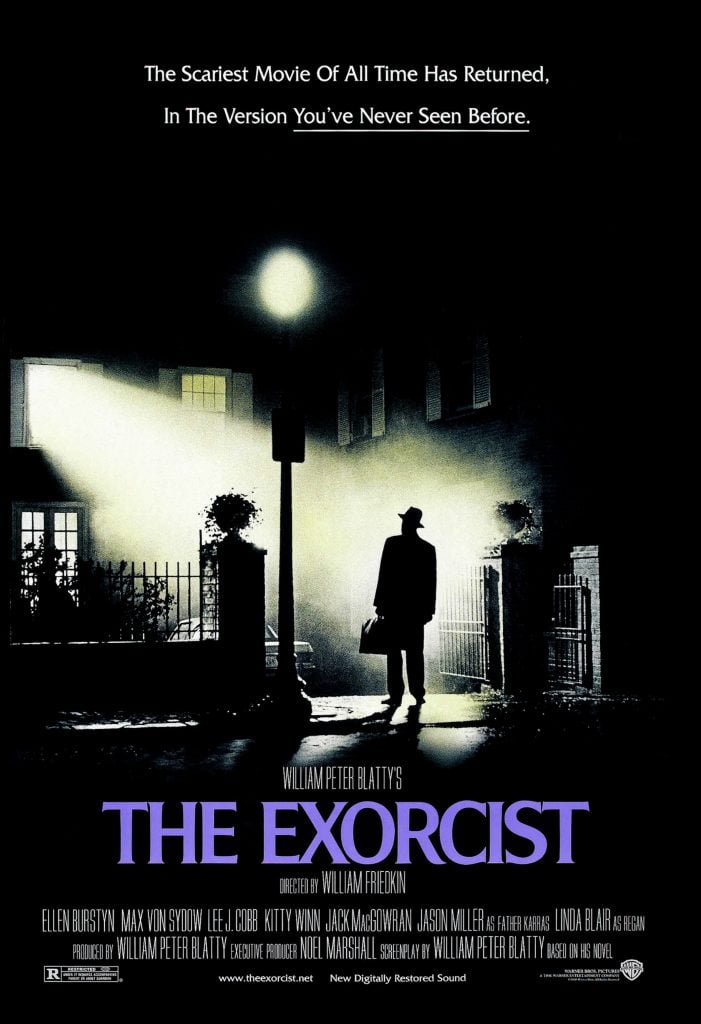Art World
Art Bites: The ‘Exorcist’ House Was Modeled After a Magritte Painting
The supernatural horror film’s set and poster drew on a spooky painting by the Belgian Surrealist.

The supernatural horror film’s set and poster drew on a spooky painting by the Belgian Surrealist.

by
Brian Boucher

Millions were terrified by The Exorcist, the 1973 horror film about the demonic possession of a young girl, which resulted in packed theaters and movie house employees telling tales of fainting and heart attacks in the seats. Those millions may not have known that one of the sets for the film, also prominently used on posters promoting it, was inspired by an artwork that was also spooky, if not as horrifying—René Magritte’s L’Empire des Lumières.
The painting’s central feature is its uncanny light. Though its upper part shows a daytime sky, the area around a house in the foreground is in darkness, and the unpeopled street is lit by a bright streetlight. Thus the painting sets up a contrast between two varieties of illumination, fittingly for its title, The Empire of Lights, plural.
The Belgian Surrealist would paint the subject some 27 times, according to a San Francisco Museum of Modern Art researcher, who writes that it all started when no fewer than four collectors were accidentally promised the original when it was exhibited at the 1954 Venice Biennale. Peggy Guggenheim ended up taking home that one, but Magritte painted three more versions to satisfy the other aspiring buyers.
The museum also points out that the title is ambiguous in the original French—”empire” can be translated as “dominion”—and that in his 1956 Guggenheim Prize speech, Magritte spoke of the work’s central conceit, saying, “I find the evocation of night and day is endowed with the power to surprise and enchant us. I call this power poetry.” In addition to the one at MoMA, versions exist in the Menil Collection in Houston and the Royal Museums of Fine Arts of Belgium, in Brussels. In 2022, a version set a Magritte record when it came to auction at Sotheby’s London, fetching $79.8 million on a $60 million estimate.
In the 2003 documentary A Decade Under the Influence, about 1970s American cinema, Exorcist director William Friedkin (The French Connection) reveals where he found his inspiration for the house, saying, “I saw [this painting] in the Museum of Modern Art in New York, it’s called Empire of Light by René Magritte. I had that in mind… and I chose the house to match the Magritte painting… the streetlamp… the shaft of light.”
Based on a 1971 novel by William Peter Blatty, the 1973 film starred Ellen Burstyn as actress Chris MacNeil, who goes to Washington, D.C., to shoot a film and rents a home in the city’s Georgetown neighborhood. Linda Blair plays her 12-year-old daughter Regan, who becomes possessed by the demon Pazuzu; in the course of the film, her head turns backwards and she projectile vomits in a priest’s face, along with other profound indignities. Jason Miller plays Father Damien Karras, who is not up to the challenge of freeing young Regan from the grips of possession, and calls in the title character, Father Lankester Merrin, played by Max von Sydow.

A poster for The Exorcist (1973) in an edit from 2000. Photo: Universal History Archive/UIG via Getty images.
The poster shows the moment Von Sydow arrives at the house. In it, as in Magritte’s painting, there is an uncanny effect of light: an improbably strong ray streams from the second-floor window onto the approaching figure, and he stands under a bright streetlamp, but despite both sources of light, his figure is completely black. The image was also chosen for the packaging of VHS and DVD releases.
The first horror film nominated for the Academy Award for Best Picture, as well as nine other awards, The Exorcist was wildly popular, though the production was thought by some participants to be cursed, with Burstyn later claiming that nine people died trying to get the movie made.
Just as the painting demanded numerous versions, the film was so popular that it would spawn a franchise, with two sequels and three prequels in addition to two more novels. As if that weren’t enough, a new trilogy was announced in 2021.